The Moment Charlie Chaplin Created 'The Tramp'
The very moment that Charlie Chaplin created his iconic character of “The Tramp” is quite the interesting story. His first time walking onto a film set was in 1914. After touring the United States for several years with a vaudeville troupe, he was invited by Mack Sennett to work in films at Keystone Studio in Los Angeles. Sennett had seen Chaplin playing a drunk in the American Music Hall on 42nd Street in New York, and was interested in having him act in Keystone Comedies.
Several days after arriving in Los Angeles, Chaplin arrived at Keystone Studio in the suburb of Edendale, but he didn't walk inside.
"Suddenly I was seized with shyness and walked quickly to the corner at a safe distance looking to see if Mr. Sennett or Mabel Normand would come out of the bungalow, but they did not appear. For half an hour I stood there, then decided to go back to the hotel. The problem of entering the studio and facing all those people became an insuperable one. For two days I arrived outside the studio, but I had not the courage to go in. The third day Mr. Sennett telephoned and wanted to know why I had not shown up. I made some sort of excuse. 'Come down right away, we'll be waiting for you,' he said. So I went down and boldly marched into the bungalow and asked for Mr. Sennett."
Chaplin's introverted behavior continued in the following days. One night in a bar downtown, a friend of another actor named Elmer Ellsworth kept ragging Chaplin about whether or not he had the ability to be funny. Chaplin described Ellsworth as "a big, cumbersome man who looked glandular, with a melancholy, hangdog expression, hairless face, sad eyes, a loose mouth and a smile that showed two missing front teeth."
"Hasn't this limey got started yet [at the studio]?"
"Not yet." I laughed uncomfortably.
"Well, you'd better be funny."
Having taken a great deal from the gentleman, I gave him back some of his own medicine. "Well, if I'm half as funny as you look, I'll do all right."
"Blimey! A sarcastic wit, eh? I'll buy him a drink after that."
Chaplin's first role on screen came soon after, playing a newspaper reporter in a documentary about the printing press, "done with a few comedy touches." After completing the role in three days, he was sad to see that the editor had butchered most of his funny gags. It wasn't until years later that the director confessed that he had deliberately cut too much, because as Chaplin put it, "he thought I knew too much."
Here are several still frames from two films in Chaplin's first few months with Keystone Studio:
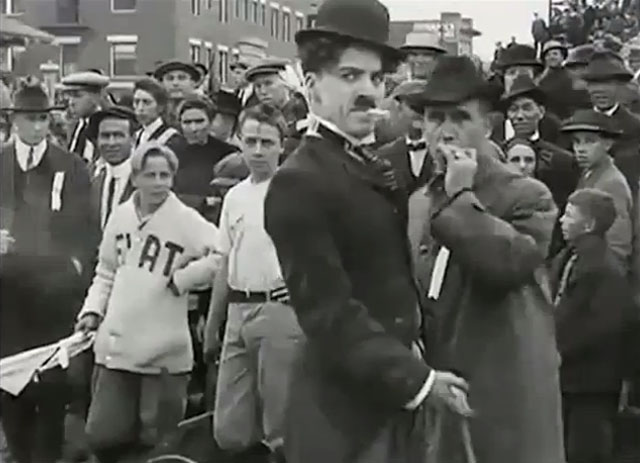
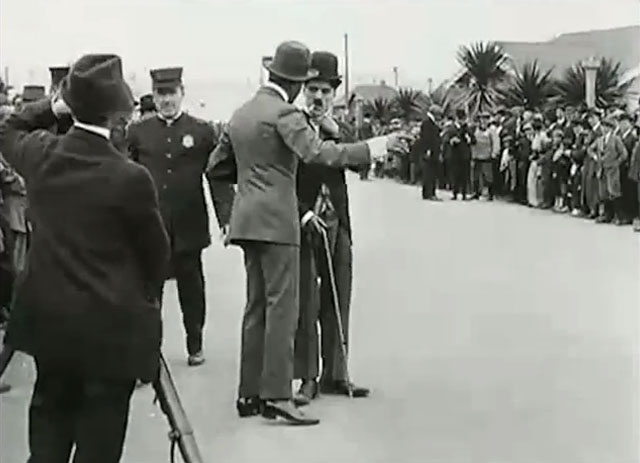
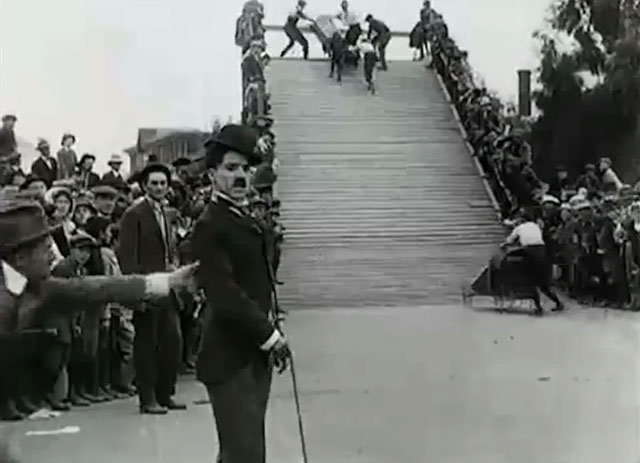
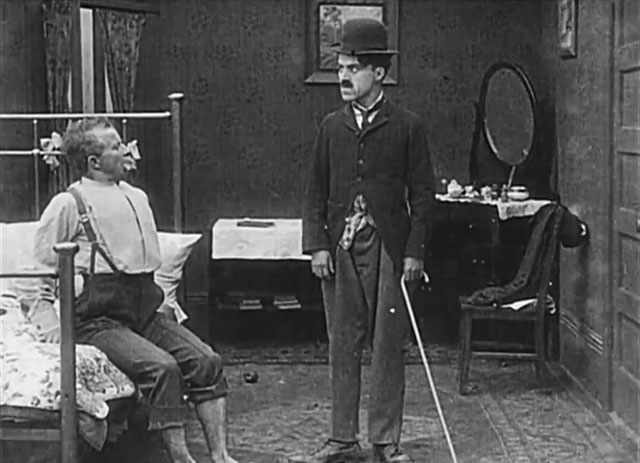

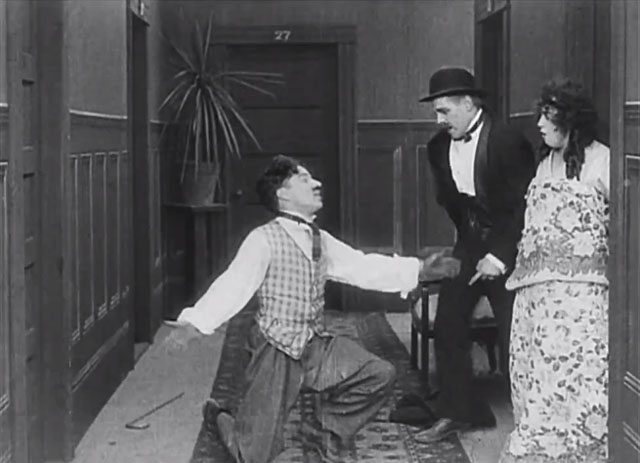
The day after the documentary wrapped, Sennett came to Chaplin asking for help in a new film and told him "we need some gags here. Put on a comedy make-up. Anything will do." This was the moment that Chaplin created the character for which he'll be forever remembered. He describes it in his own words:
"I had no idea what make-up to put on. I did not like my getup as the press reporter. However, on the way to the wardrobe I thought I would dress in baggy pants, big shoes, a cane and a derby hat. I wanted everything a contradiction: the pants baggy, the coat tight, the hat small and the shoes large. I was undecided whether to look old or young, but remembering Sennett had expected me to be a much older man, I added a small mustache, which, I reasoned, would add age without hiding my expression.
I had no idea of the character. But the moment I was dressed, the clothes and the make-up made me feel the person he was. I began to know him, and by the time I walked onto the stage he was fully born. When I confronted Sennett I assumed the character and strutted about, swinging my cane and parading before him. Gags and comedy ideas went racing through my mind.
The secret of Mack Sennett's success was his enthusiasm. He was a great audience and laughed genuinely at what he thought funny. He stood and giggled until his body began to shake. This encouraged me and I began to explain the character: 'You know this fellow is many-sided, a tramp, a gentleman, a poet, a dreamer, a lonely fellow, always hopeful of romance and adventure. He would have you believe he is a scientist, a musician, a duke, a polo player. However, he is not above picking up cigarette butts or robbing a baby of its candy. And, of course, if the occasion warrants it, he will kick a lady in the rear — but only in extreme anger!"
This is the film they shot that day. An iconic character was born.
Source: Chaplin, Charles. Charles Chaplin: My Autobiography. New York: Simon and Schuster, 1964.

